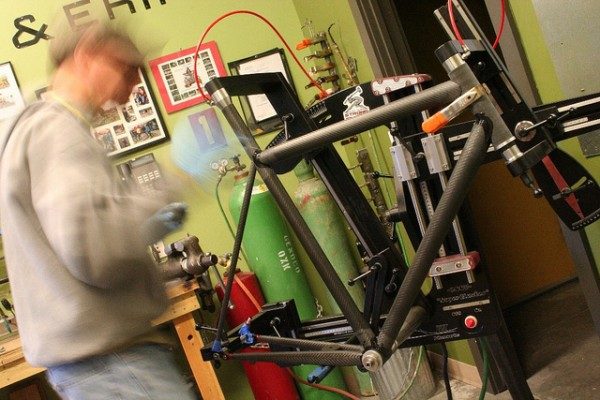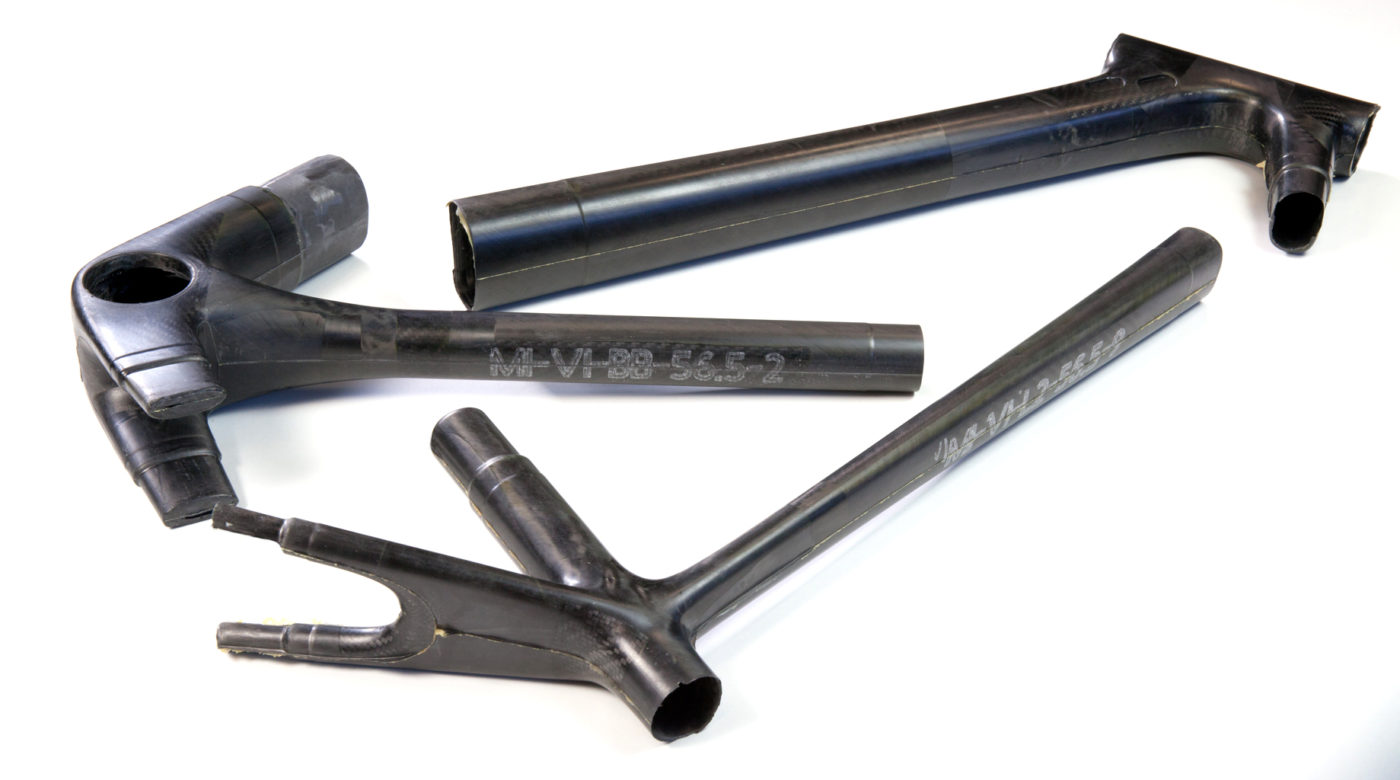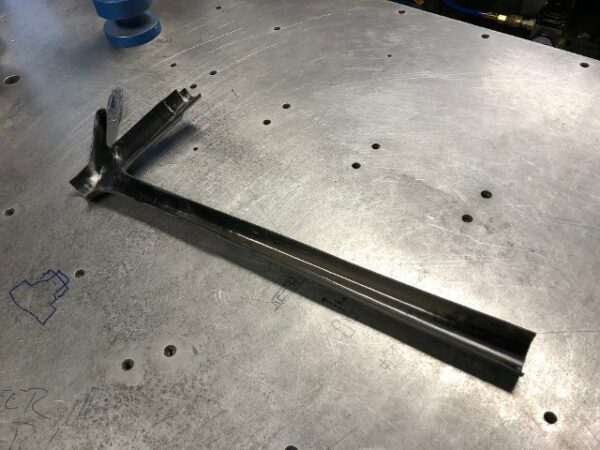Because I just learned how to add the (™) I feel compelled to trademark something. Seems the industry likes to throw around the term “monocoque” quite a bit so I’m going to mix it up. At Pursuit we employ Tricoque™ technology. That’s two better than monocoque. I kid, but in all seriousness we do build our front triangles in three pieces and here is an explanation to why.
As many of you may know, carbon fiber frames are made primarily in one of two ways; either tubes joined by lugs/wrap, or by molding. And just to be clear, many of the tube frames use molded tubes. But when we refer to molded, we are referring to complete sections of the bike molded with no joints at tube intersections.

Figure 1. Bonding a tube to tube frame using roll-wrapped tubes made by Enve. Photo: Strong Frames Inc. 2011
At Pursuit™ we make our bikes using the molded construction. To take it a bit farther, there are a variety of configurations used when making molded bikes. Most make the rear stays and dropouts as individual pieces which is what we do. Or you may see some manufacturers use wishbone style stays reducing the parts from 2 seaststays and 2 chainstays to 1 wishbone seastay and 1 wishbone chainstay. The dropouts are almost always a separate part. So assuming that the rear of the bike is pretty much made in the same manner by most manufactures, the major difference is going to be the front triangle.
You will see a lot of manufactures make their front triangle in a single part (monocoque). That is a good way to do it. There are no joints between the parts and no interruptions in the fibers. There is also less work because they do not require bonding or over-wrapping at the bonded areas. It’s faster, requires one tool and one operation.
But what we do is make the front triangle in three parts, thus – Tricoque™(tongue firmly in cheek) . And while this method takes more time and costs more money, there is a very good reason to do it – compaction. Compacting the layers of material in the carbon fiber laminate is one of the keys to making a light, strong part. It can also be a challenge. Allowing wrinkles, bridges, waves and other imperfections can reduce the fatigue life of the frame.

Figure 2. The three front sub-assemblies out of the mold prior to deflashing and prep.
With the Tricoque™ construction we are able to produce really good compaction and control for imperfections. By making the front triangle in three parts we have access to the inside of the part. This allow us to use perfectly form fitting bladders and if needed intensifiers and internal molds to make sure every surface is perfectly flat, smooth and compacted. If we made the front triangle in one part, we’d have to use bladders that we would either leave in or were able to remove through the small openings and these types of bladders do not provide the fit and shape required for a perfect finish.

Figure 3. Molded part cut apart to reveal perfect interior finish.
With Tricoque™ we are also allowed the luxury of visually examining the interior of every part we make as a matter of routine quality assurance. This assures that every part we use is perfect. And if an issue were to arise, we will know about it immediately.
So there you have it, our super secret Tricoque™ construction. And in all fairness I kid about the name, other manufactures use this process as well. It’s typically reserved for the higher end frames due to the added cost and time involved.
Questions or comments? Please post below, we’d love to hear from you. And if you aren’t on our mailing list and would like to receive the occasional email, you can sign up here.